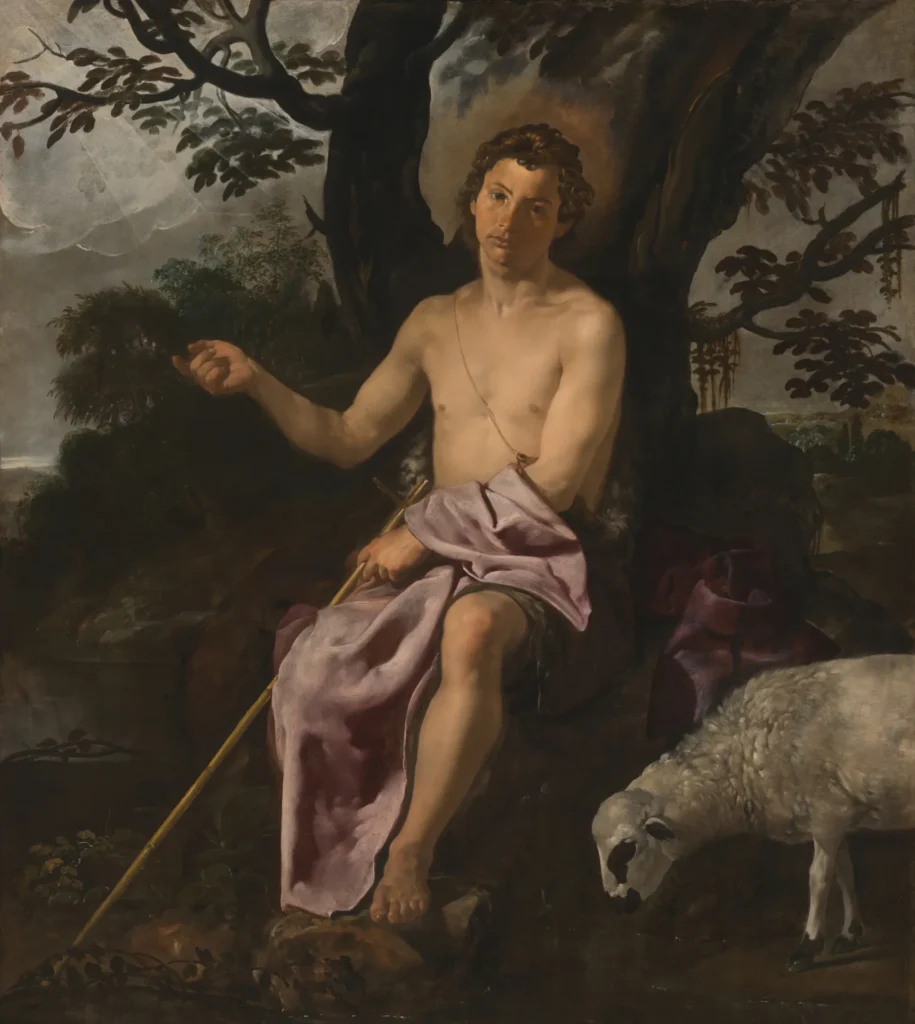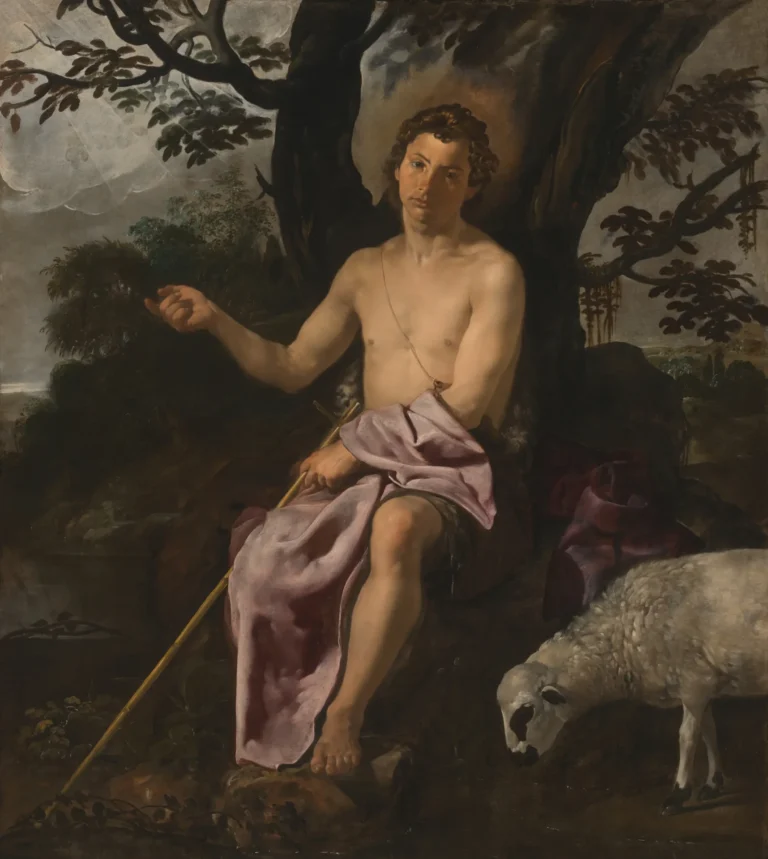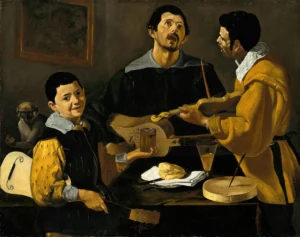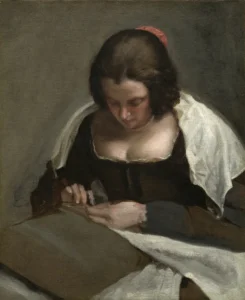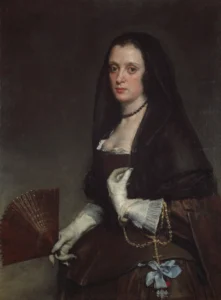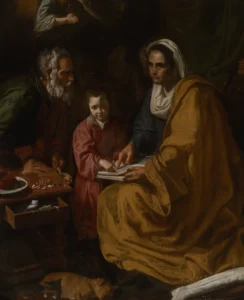Saint John the Baptist in the Wilderness (ca. 1622)
This remarkable oil on canvas painting portrays a young Saint John the Baptist as a hermit in the wilderness. His symbolic gestures, holding a cross of reeds and pointing, paired with the lamb nearby, evoke his prophetic role as heralding Christ. Velázquez's early exposure to Italian works reflects in the idealized representation of Saint John, marking a crucial evolution in the artist's technique toward a bolder and freer brushwork style.
1622
About the Artwork
Saint John the Baptist in the Wilderness reflects the early artistic journey of Diego Velázquez, an artist who would later become one of Spain's most celebrated painters. Attributed to an unknown Sevillian artist initially, it's now recognized as a formative work by the young Velázquez around 1622, a time that parallels his brief yet impactful exposure to Italian masterworks in the royal collection of Madrid. This experience enriched his artistic approach, merging the existing tenebrist techniques with a transition toward a more liberated style characterized by expressive brushstrokes. In this piece, Saint John embodies the prophetic essence of his role in Christianity, captured through the symbolic lamb and his gestures. The painting, gifted to The Art Institute of Chicago, continues to engage viewers, inviting them to ponder the deeper meanings within its rich imagery.
Did You Know
Liked what you see? Add it to your collection.
Enjoyed reading? Share it.
... continued
Artist and Attribution
The painting was previously attributed to an unknown Sevillian artist but has been recognized as the work of a young Diego Velázquez.
Date and Period
It is dated between 1617 and 1627, with some sources specifying around 1622. This period is notable as it follows Velázquez's brief visit to Madrid in 1622, where he was exposed to Italian paintings in the royal collection, influencing his depiction of the human figure.
Subject and Symbolism
The painting depicts a young Saint John the Baptist living as a hermit in the wilderness. The cross of reeds he holds, his pointing gesture, and the nearby lamb are symbolic references to his role as a prophet foretelling the coming of Christ, known as the "Lamb of God" in the New Testament.
Style and Technique
The treatment of the saint is more idealized than figures in Velázquez’s earliest work, indicating the influence of Italian art he encountered during his visit to Madrid. This marks a transition in his style from a precise tenebrist approach to a freer manner characterized by bold brushwork.
Medium and Dimensions
The painting is executed in oil on canvas and measures 175.3 × 152.5 cm (69 × 60 in.). When framed, it is 202.3 × 184.2 × 9.2 cm (79 5/8 × 72 1/2 × 3 5/8 in.).
Current Location
The painting is part of the collection at The Art Institute of Chicago, where it is currently on view in Gallery 211.
Credit Line
The painting was gifted to the Art Institute of Chicago by Barbara Deering Danielson and is referenced under the number 1957.563.




